
views
Healing the Blister
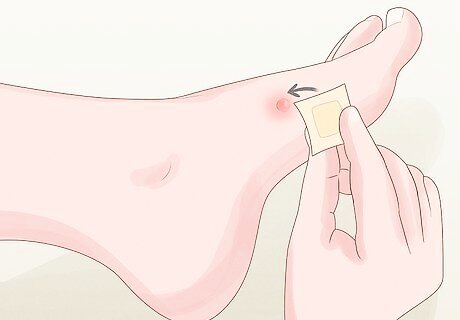
Keep the blister covered with a bandage. Whether the blister is on your hand or foot, it’s important to protect it until it heals. Cover it with a loose bandage to prevent friction and tearing. Keep the blister covered and protected throughout the day so it heals as quickly as possible. If you use a sticky bandage, make sure the sticky part isn’t touching the blister. This will be painful to pull off. Unless the blister ruptured or started draining, you don’t have to use any antibacterial cream on it.

Don’t put pressure on the blister so it doesn’t get worse. Any friction or pressure on the blister can delay healing, so do your best to keep pressure off of it. This is much easier on your hand then on your foot. Just be careful when you grab or lift anything and make sure the stress isn’t on the blister. If the blister is on your foot, try putting some moleskin around it to keep the area cushioned while you walk. If you got the blister while climbing, take a break for at least a few days and let it heal. If you can’t avoid grabbing or holding things while you have a blister on your hand, then you can use some moleskin to pad the area and reduce pressure on the blister.
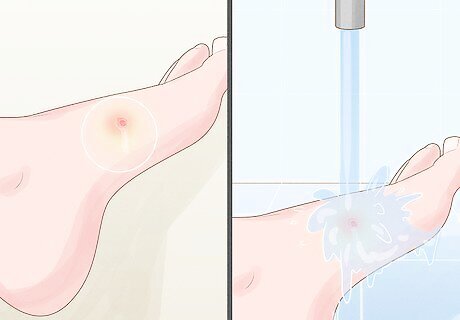
Wash and dry the blister if it starts draining on its own. Even if you do your best to protect it, it’s still possible that the blister will rupture and start draining on its own. If there is liquid coming out of the blister, or you see any cracks or tears in it, wash it gently with soap and water, then rinse it thoroughly. Pat it dry, apply petroleum jelly to help the wound heal, and cover it with a fresh bandage.

Drain the blister if it’s painful. Doctors usually don’t recommend draining blisters because they provide a barrier for new skin to grow. If you aren't feeling too uncomfortable, it's best to keep the blister intact, but you can drain it if you’re in a lot of pain. Wash the blister with soap and water. Then sterilize a sharp needle with antiseptic. Poke a few holes around the blister edge and drain the liquid out. Wash the area again, apply an antibacterial ointment, then cover the blister with a fresh bandage. Don’t peel the dead skin off, even if the blister drains. Keeping it in place helps prevent infections. You could also use petroleum jelly if you don’t have antibacterial ointment.
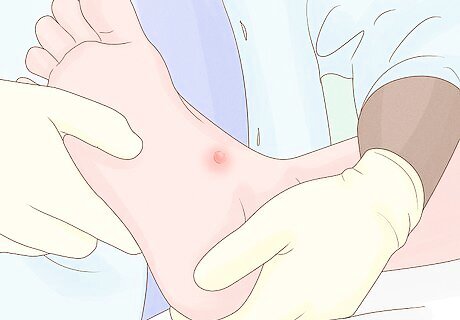
See a doctor or dermatologist if the blister looks infected or inflamed. Unfortunately, it’s possible for the blister to get infected. Monitor the blister for redness, pain, or pus, which all can indicate an infection. Call your doctor and get treatment to clear the infection up. You should also see a doctor right away if you have a circulation problem or diabetes. This could cause a serious infection.
Climbing with a Blister
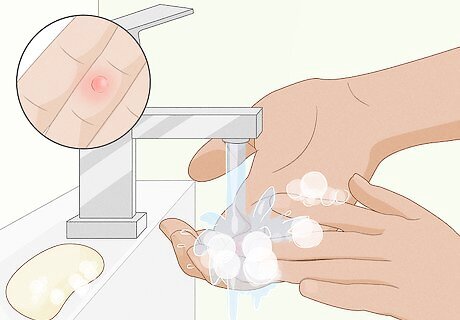
Wash the blister with soap and water. Keeping the blister clean will help prevent infection, especially if it’s already popped or drained. Use a soap and water to gently cleanse the area around the blister. Pat it dry when you’re done. When drying the area, use a clean, dry towel or paper towel. Pat gently instead of rubbing, which could irritate the blister.
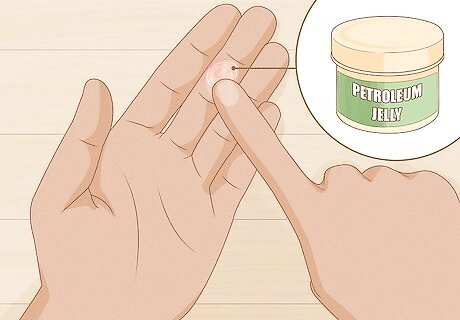
Apply a layer of petroleum jelly to the blister. Once the blister is clean and dry, swipe on a thin layer of petroleum jelly or Vaseline. Keep it localized to the area of the blister and make sure you can completely cover it with bandages and tape, since you don’t want slippery ointment all over your hands while you climb. Petroleum jelly will help reduce friction on the blister. If the blister has already drained and you have an open wound, it will also help lock in moisture and promote faster healing.

Cover the blister with a regular bandage. While climbing with a blister isn’t advised, you can still do it if you protect the blister properly. Start by covering the blister with a bandage or gauze wrap. Keep the bandage loose so it doesn’t cut off any circulation in your hand or foot. You could also use this same trick to protect any cracks or cuts on your hands before you climb. If you used ointment or petroleum jelly on your hands, make sure it’s completely covered by the bandage to prevent slipping. If you use non-stick gauze to cover the blister, secure it down with medical tape before wrapping it with climbing tape.
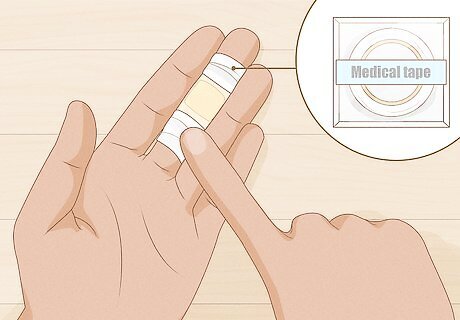
Tape up the bandage to prevent it from slipping. You’ll need more padding than just a bandage to protect the blister while you’re climbing. Use standard climbing tape and wrap it around the bandage to secure it in place. Make sure the tape isn’t too tight or you’ll cut off circulation in your hands or feet. Don’t put climbing tape over the blister without covering it with a bandage first. Otherwise you could tear the blister when you remove the tape.
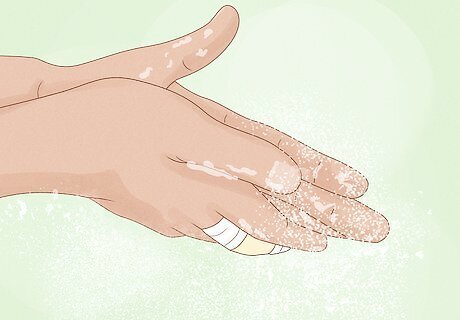
Chalk up your hands so you don’t slip. Always chalk-up well before you start climbing so you can maintain a good grip. Chalking is always important when you’re climbing, but especially if you’re climbing with any injuries. Slipping can easily tear off a bandage and the blister itself, giving you a nasty cut. You could also pre-coat your hands with liquid chalk. This dries up any moisture on your hands and provides a good base for the powdered chalk.
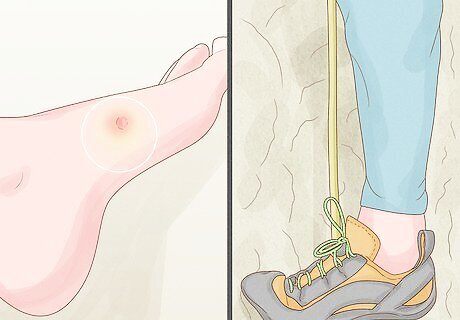
Wear well-fitting shoes to avoid pressure points on your feet. If the blister is on your foot, then good shoes are the best way to protect it while you're climbing. Make sure they fit properly so they don't rub against the blister and make it worse. Wearing the right shoes is also a good way to prevent blisters in the first place, so always wear high-quality shoes when you climb.















Comments
0 comment